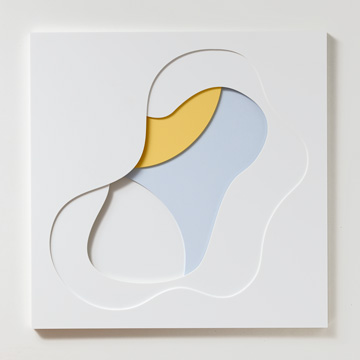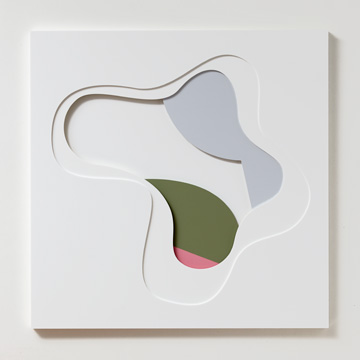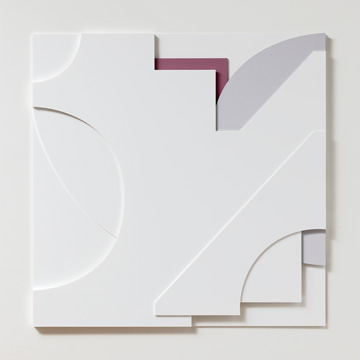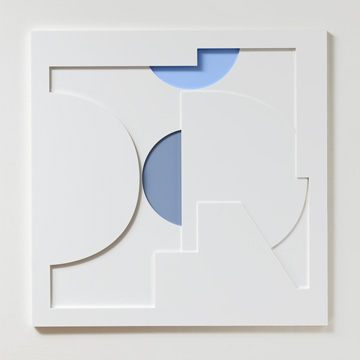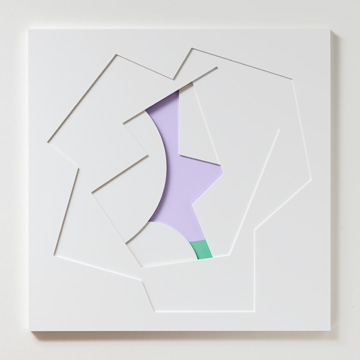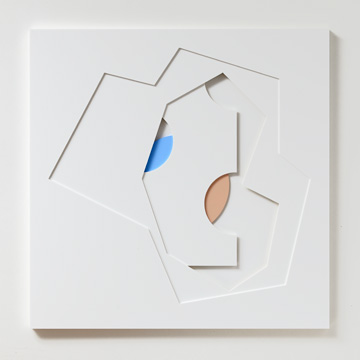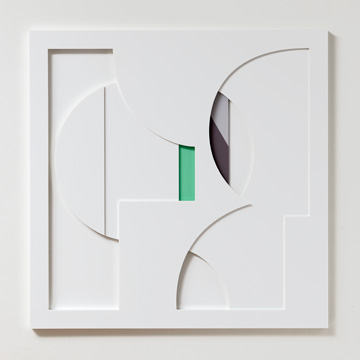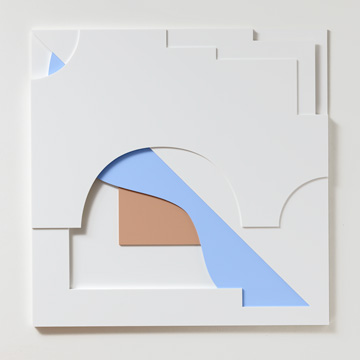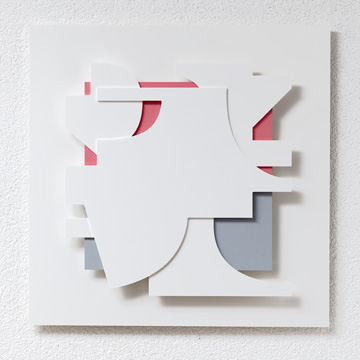The square reliefs explore material, space, form, color, light and shadow as parts of an experimental continuum.
A topographic map with free-flowing contour lines indicating the natural elevations in the landscape inspired the first two reliefs. The character of the subsequent reliefs was derived from jagged contour lines, half- and quarter circles.
The reliefs are the result of a creative process that began with pencil sketches and small-scale three-dimensional models. The final composition further evolved by playing with forms, solids and voids, and by observing the shadows cast by the individual layers of material. All aesthetic decisions were optical, nothing was conceived systematically or schematically.
The white material and the grey shadows cast by the different layers give the relief its basic character. Color is used sparingly to accentuate individual forms or to provide the composition with additional depth.
The relief consists of four or five layers of three-millimeter Forex board, a PVC compound. The final form of each layer is drawn on the computer for CNC milling. The reliefs are architectural in that, invisible to the viewer, each layer is supported by parts of the layer beneath it.
Unlike the painting, which generally is viewed straight on, the relief encourages the viewer to look at it from different angles. Every change in perspective alters the shadows cast by the different layers.
